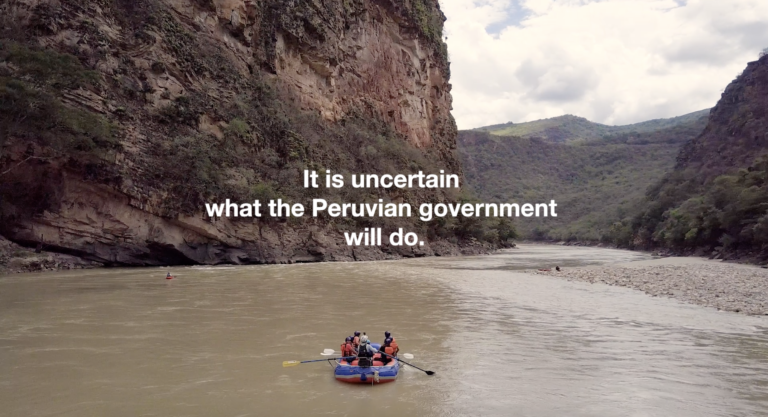A Win for the Marañón River? Enel asks Peruvian Government to terminate dam contract
By: Waterkeeper Alliance

Future of Critical Amazon River Tributary Still in Danger
A global energy company with a concession to build a dam on the Marañón River, a major tributary to the Amazon, has formally asked the Peruvian government to terminate its contract.
The energy company, Enel, said in a recent letter to Waterkeeper Alliance that the Peruvian government is evaluating its request to terminate its concession to build the planned Veracruz dam. The company said it will not be making public statements about the request until the administrative review is complete.
Enel’s letter was part of a campaign by the Peruvian Society for Environmental Law, Marañón Waterkeeper, and Waterkeeper Alliance, which are fighting 20 planned dams on the river.
The groups are urging the Peruvian government to review existing contracts to build the dams, grant no new contracts, and begin planning for a future of the Marañón that includes tourism, the protection of the livelihoods of local and indigenous communities that depend on the river, and the protection of ancient rock paintings. The groups collected more than 4,400 signatures on a petition asking the Peruvian government to cancel plans to build the dams.
If built, the Veracruz dam would be 525 feet high and act as a wall blocking migratory fish; it would inundate nine small communities and would flood ancient pictographs and 225 hectares of farmland.
It would create a reservoir that would flood more than 3,000 hectares of Marañón dry forest. There are 143 species that only exist in the Marañón valley, which has one of the highest levels of endemism, defined as species native to a location, in the world, rivaling the Galapagos Islands. Because the reservoir would accumulate great amounts of organic matter, the dam would emit an estimated 98,138 metric tonnes of CO2 equivalent over its lifetime, in addition to emissions from the loss of forests.
Economically, the dam would not be commercially viable thanks to a Peruvian energy surplus projected to last until at least 2030. The dam would only make financial sense if the Peruvian government bought energy at a fixed price for a long term, which it did for two other big dams in the past, creating an unfair scenario for non-conventional renewable energy and causing economic problems for ElectroPeru, a state-run electricity company that hundreds of thousands of retirees depend upon for their pensions.
Enel’s CEO, Francesco Starace, has said in interviews not related to this project that the company is moving toward greener projects and away from big dams because of their negative impacts. He has said that building big dams and infrastructure projects that take longer than five years to finish was an industry mistake, one his company will not repeat.
“It’s time the Peruvian government and other concession-holders for dams on the Marañón learned the same lesson,” said Bruno Monteferri, Marañón Waterkeeper. “The country has an opportunity to move to truly green energy rather than build dams that will serve their purpose for only 35 years while destroying a connection that has existed for millions of years between the Andes and the Amazon.”